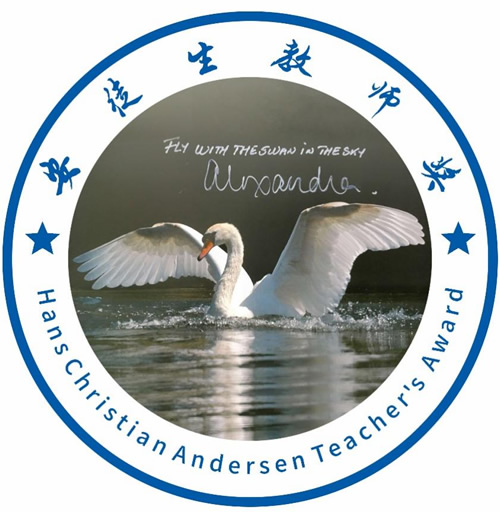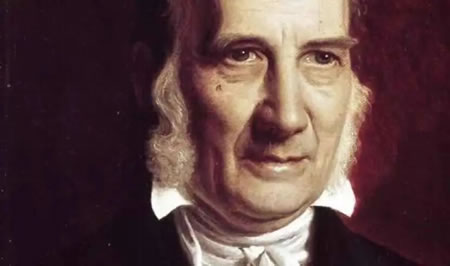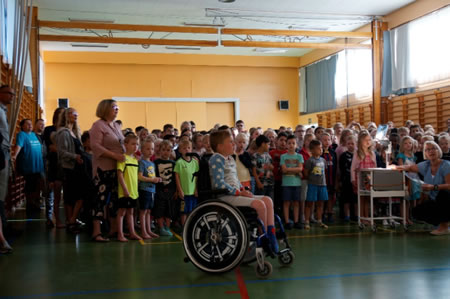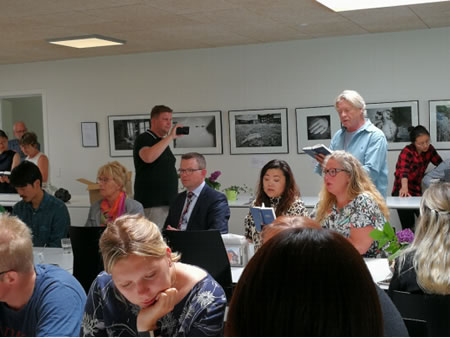Pro.Yang Dongping, Member of the National Education Advisory Committee

Editor's Note:
In May 2018, renowned Chinese educator Yang Dongping participated in the "AIKC Program" as an expert. During his two-week study tour in Denmark, he systematically explored why Denmark—a nation of merely 5.9 million people—consistently ranks highest in global happiness indices, maintains social harmony, and fosters exceptional creativity through its educational system.
In this article, Professor Yang comprehensively introduces Denmark’s education model, highlighting the Nordic region’s secret to success: N.F.S. Grundtvig’s Folk Højskole philosophy. This holds significant reference value for China’s pursuit of a harmonious society.
In June 2017, when Japan’s Crown Prince Naruhito (now Emperor) visited the Nordfyn Folk Højskole in Denmark, he humbly asked the school’s founder, Mr. Chiba Tadao: "What can Japan learn from Denmark?"
Chiba Tadao responded: "Adopt Grundtvig’s folk education philosophy to elevate the quality of Japan’s citizens."

Hello everyone, I’m Yang Dongping from the 21st Century Education Research Institute. Today, let’s explore education in Denmark.
When we think of Denmark, fairy tales like *The Little Mermaid* and Hans Christian Andersen often come to mind. Yet Denmark’s educational and technological achievements are equally remarkable. With a population of just 5.6 million, it has produced 13 Nobel laureates—the highest per capita rate globally. Denmark is also home to iconic international brands: Royal Dansk cookies, Carlsberg beer, Vestas wind turbines, LEGO toys, ECCO shoes, and more.
Known as one of the world’s happiest nations, Denmark combines social equity with extraordinary creativity. According to EU innovation reports, Denmark and Finland have consistently ranked first and second in comprehensive innovation capabilities since 2005.
Denmark’s education system is equally distinctive. The globally popular "Problem-Based Learning" (PBL) teaching model originated at Aalborg University in the 1970s. Today, we’ll focus on Denmark’s diverse and flexible basic education system.
Denmark has a long tradition of decentralized education governance. As early as 1814, legislation mandated seven years of compulsory education while granting parents freedom to choose educational forms for their children. This philosophy of educational liberty, initially proposed by pastor-poet N.F.S. Grundtvig, was elevated to constitutional status by 1915. Parents may select schools based on religious beliefs, educational philosophies, or political values—options include public schools, private schools, homeschools, and parent-founded independent institutions.

N.F.S. Grundtvig (1783-1872)
Denmark’s private schools, known as *"friskolen"* (free schools), differ markedly from elite private institutions elsewhere. In Nordic countries, compulsory-stage private schools are typically smaller in scale and enrollment share compared to public schools, without any inherent academic advantages. Two-thirds of these schools attract families through specialized approaches—Montessori, Waldorf, or other alternative pedagogies.
The diversity of Danish private schools stems from accessible establishment policies. Any organization, adult group, or parents may found a private school for children aged 6–18. Enrollment thresholds are modest: 12 students in the first year, 20 in the second, and 28 thereafter. These schools must meet public education standards through government oversight. Upon maintaining 28+ students for three years, they receive state subsidies covering 75% of per-pupil public school costs, making public funding their primary financial source.

Denmark's childcare and preschool education system is community-based. Its early childhood education is not managed by the Ministry of Education but rather by the civil affairs system. The newly revised Day Care Act of 2018 states:
"The goal of education is to create environments conducive to children's learning, rather than to directly instruct children."
— Danish Day Care Act, 2018
This concept places early childhood education within the holistic development of family, environment, and community, rather than emphasizing formal school-based instruction.
Consequently, communities not only host many parent-established childcare institutions and kindergartens, but each community also operates youth clubs catering to children of different age groups, including younger children. Sports programs include football, handball, tennis, swimming, shooting, horseback riding, gymnastics, etc. These clubs are typically located near schools and residential areas with affordable fees, ensuring nearly every child can participate in at least one club – a direct outcome of embedding children's education within community frameworks.
After nine years of compulsory education, Danish secondary education divides into:
- General Upper Secondary School (Stx)
- Business College (Hhx)
- Technical College (Htx)
- Preparatory College (Hf) – a two-year program for students who have completed 10 years of compulsory education.
Denmark also features specialized "Youth Schools" for adolescents in grades 9-10 (ages 14-16). These serve as transitional technical schools (1-2 years) helping conflicted teenagers self-adjust and discover interests. Curriculum focuses include sociology, sports, music, nature studies, and ecology. Approximately half of Danish students opt for an additional 10th grade at these youth schools after completing junior high.
Post-secondary education, about 75% of Danish students choose a "gap year" – taking a year to travel, experience society, and reflect on future academic/career paths.
For those struggling with vocational schools or workplace adaptation, Denmark offers "Adult High Schools" (typically two-year programs). Graduates can apply to universities, with options available through adulthood, helping individuals continuously rediscover their aptitudes and passions.
A unique Danish institution is the "Folk Højskole" for adults over 17.5 years old, providing non-degree short-term education. Founded in 1844 by N.F.S. Grundtvig, these schools spread throughout Scandinavia with an original mission of civic enlightenment through Danish language studies, folk singing, poetry, and awakening peasants into active citizens.

(Folk Højskole students singing)
Modern Folk Højskoles primarily help troubled adults through short-term courses to revitalize themselves. Some call them "kindergartens for adults" – tasked with reigniting life passion, cultivating citizenship, and teaching lifelong learning. Curriculum includes sports, music, environmental studies, sustainability, global issues, Danish language, and "life studies" (healthy living, disability wellness, weight management, etc.).
These distinctive educational models – absent in many other systems – represent particularly valuable references for international educational reform.